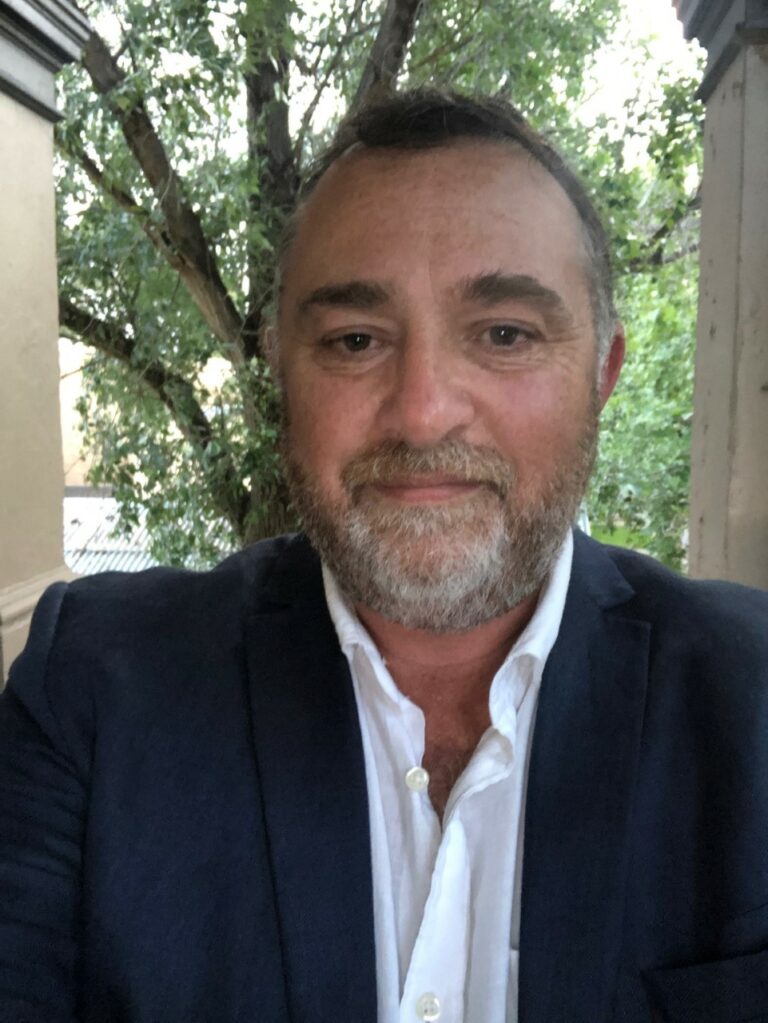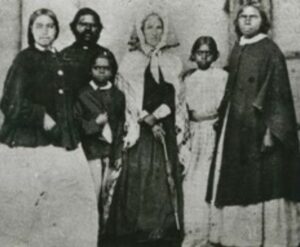It was at a family reunion, way back in 2005 that Richard Holmes discovered that his love for country and the bush was rooted in a previously unknown Indigenous ancestry. One of Richard’s family members had recently documented their family tree and had discovered that they had Indigenous ancestry. In exploring this newfound ancestry Richard and his family uncovered the fascinating story of his great-great-Grandmother Annie Brice.
First Nations Heritage
Born on an Aboriginal camp near Penola station in Southeast South Australia in 1849 to Natunda, a Boandik woman from Berrin (Mount Gambier), and English-born William Brice, who had been sent to Van Diemen’s Land as a convict. Annie was born on Pinejunga land and following the customs of the Boandik people, she belonged to her mother’s group, the Kumite; the red-tailed black cockatoo was her totem. As a young girl she was left at the Pinejunga camp where the station owner, Alexander Cameron, and his wife, Margaret took care of her, along with several other Aboriginal children. In 1860, Cameron’s niece came to the station and took on the role of Governess to their children. She quickly formed a close relationship with Annie, teaching her to read and write, making her one of the few Aboriginal children to be able to do so at the time. The name of Cameron’s niece was Mary MacKillop.
Annie went on to spend time at the school at St Joseph’s Church in Penola, and on 13 January 1867, she was confirmed at St Joseph’s by Bishop Laurence Bonaventure Sheil. By now, Annie had become quite the role model for other Aboriginal children.
As a young woman, Annie assisted at a school for Aboriginal children run by Christina Smith, while working as a domestic servant in Mount Gambier. She went on to have 13 children. Richard’s great-great-great-grandfather, George Holmes was born in Ireland and immigrated to Australia at the age of 20, settling in Mount Gambier where he met and married Annie, having 3 children with her. Annie Brice died on 9 June 1931 at Mount Gambier. She is remembered as a strong, assertive, and proud Aboriginal woman, who knew her rights and fought for justice for herself, her children, and their families.
Learning about your Indigenous ancestry takes a lot of time and effort, but the more you learn about them, the more you discover about yourself. Richard says that he certainly wasn’t oblivious to the plight of the Aboriginal people before finding out about his heritage, but that he’d certainly learned a lot more since. He feels proud of this connection and acknowledges that it’s an important part of his heritage.
Since starting their research, Richard’s family has learned that they are some of the last surviving members of the Boandik people. When Annie was left behind in the camp on the station, she was just five or six years old, the rest of the tribe had packed up and moved camp to Port Macdonnell, where they were sadly massacred. They have learned that there are only about 20 or so families left, and so far, they have united with most of them. They are currently working on claiming some land from the Government to use as a family meeting place to further connect to their heritage and their family.
Community
Richard says that when first connecting with their newfound Indigenous ancestry they were embraced by the Indigenous community, without hesitation. Back when Richard’s son Charlie was a teenager, he was an excellent cricket player, playing first 11 cricket by the end of year 8! It was during this time that the family learned about their Indigenous heritage and Charlie happened to be training with none other than Jason Gillespie, who ended Australia’s 119-year wait for its first Indigenous male Test cricketer. Jason’s business partner was training a team called the Southern Boomerangs, the state cricket team for Indigenous cricketers. Both Richard and Charlie were unaware of the large Indigenous cricket circle and at a training session one night Richard casually mentioned that they’d discovered their Indigenous background. Charlie was immediately invited to join the Southern Boomerangs and at 15 he decided that he would like to play for the side, with his brother Felix joining soon after. Right away, the coaches and players were welcoming and open, making them feel like part of the family.
There’s still a lot of research and uncovering to do, and of course, life gets in the way but Richard is keen to spend more time down in Southeast South Australia connecting with his heritage and family. The more they learn the more connected they feel to their heritage, and that is a truly special thing.


